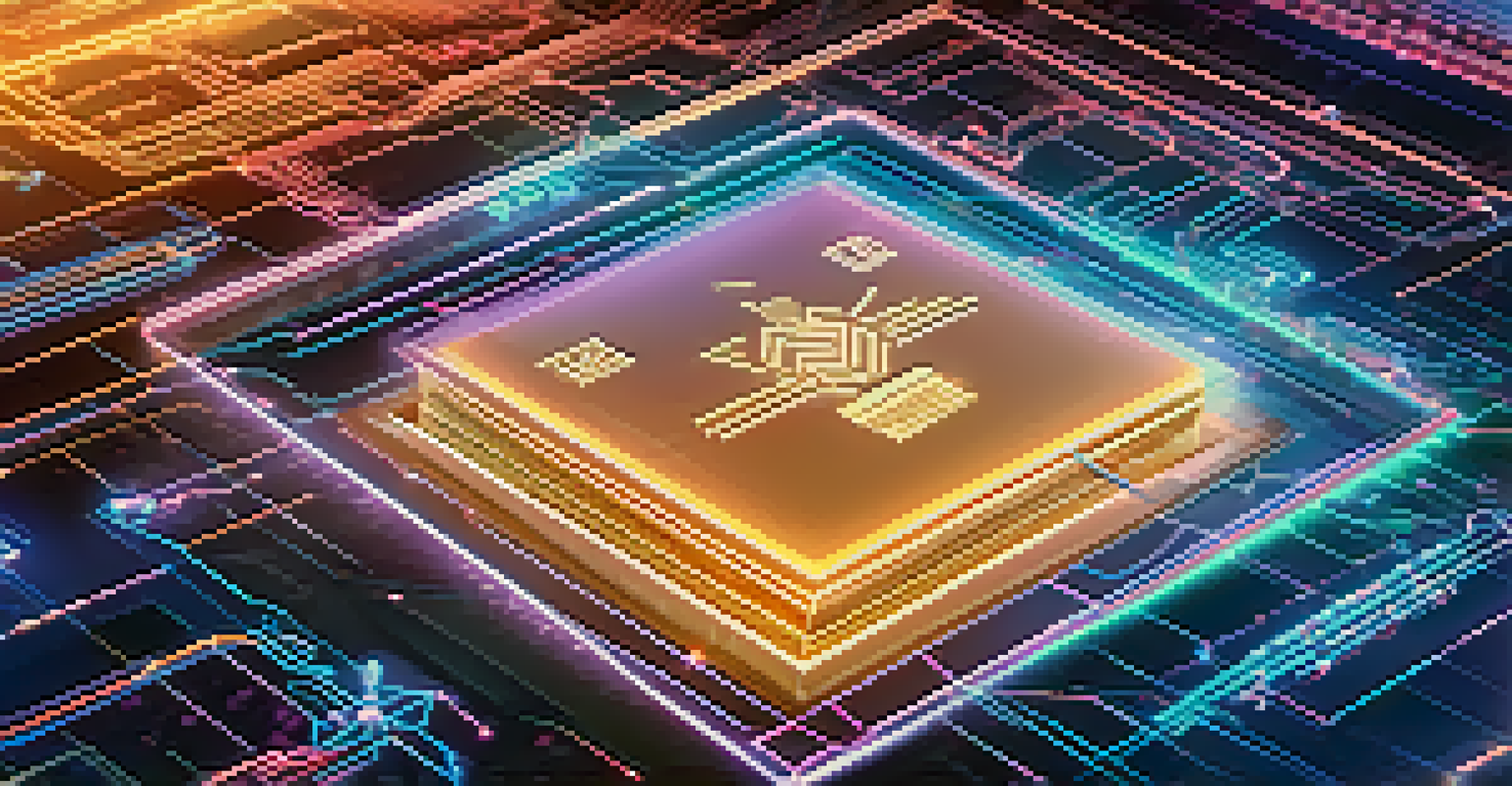NFTs and Student Identity: Securing Academic Records with Blockchain

Understanding NFTs: A New Era for Digital Assets
Non-fungible tokens, or NFTs, represent unique digital assets verified through blockchain technology. Unlike cryptocurrencies, which are interchangeable, each NFT has distinct information that makes it one-of-a-kind. This uniqueness allows NFTs to capture ownership of various items, from art to academic credentials, paving the way for innovative applications in education.
Blockchain technology is the backbone of NFTs, providing a secure and transparent means to verify ownership and authenticity.
In the realm of education, NFTs can be particularly beneficial for students. Imagine having a digital badge or certificate that not only proves your achievements but also cannot be altered or duplicated. This secure proof of accomplishments can be pivotal in a competitive job market, enhancing a graduate's prospects significantly.
By leveraging NFTs, educational institutions can streamline processes and reduce fraud associated with traditional diplomas and transcripts. As the world increasingly embraces digital solutions, understanding NFTs and their applications is essential for both students and educators.
The Role of Blockchain in Securing Academic Records
Blockchain technology acts as a decentralized ledger that records transactions across many computers, making it nearly impossible to alter or hack. This quality is particularly important for academic records, where the integrity of information is paramount. By using blockchain, schools can ensure that once a record is created, it remains unchanged and secure.

When academic achievements are stored on a blockchain, they can be easily verified by employers or other institutions without the need for intermediaries. This not only saves time but also enhances trust in the qualifications presented by graduates. Imagine an employer effortlessly checking a candidate's credentials with a simple digital verification process.
NFTs Enhance Digital Credentials
NFTs provide students with secure, verifiable digital badges and certificates that streamline the job application process.
Moreover, blockchain's transparency allows students to maintain control over their personal data. They can choose when and with whom to share their credentials, fostering a sense of ownership over their academic identity that traditional systems often lack.
Benefits of NFTs for Students and Institutions
For students, NFTs offer a secure and portable way to showcase their academic achievements. Instead of carrying physical copies of diplomas or transcripts, students can present their credentials as easily shareable digital assets. This modern approach not only caters to tech-savvy generations but also streamlines the verification process.
The future of education is digital, and NFTs represent a significant step toward modernizing how we recognize and share academic achievements.
Educational institutions also stand to gain from implementing NFTs. By digitizing and securing records, they can reduce administrative burdens and minimize the risk of fraud. This efficiency can lead to cost savings and increased trust in the institution's reputation.
Additionally, NFTs have the potential to create new revenue streams for schools. By issuing unique digital badges or certificates, institutions can monetize their branding and offer specialized programs, attracting more students while enhancing their academic offerings.
Challenges in Implementing NFTs in Education
Despite the benefits, the integration of NFTs in education is not without challenges. Concerns regarding the initial setup costs and the need for technological infrastructure can be significant barriers for some institutions. Many schools may feel overwhelmed by the prospect of adopting new technologies, especially if they lack the necessary expertise.
Moreover, there is a need for widespread awareness and understanding of NFTs among students, educators, and employers. Misconceptions about blockchain and NFTs can lead to resistance or skepticism, hindering their adoption in the academic world. Educational campaigns will be crucial to ensure that all stakeholders are informed about the advantages and workings of these technologies.
Blockchain Secures Academic Records
By using blockchain technology, educational institutions can ensure the integrity and unalterability of academic records.
Lastly, privacy and data security remain paramount concerns. While blockchain is secure, the information stored is still sensitive, and institutions must ensure they comply with regulations like GDPR. Striking a balance between transparency and privacy will be crucial for successful implementation.
Real-World Examples of NFTs in Education
Some institutions have already begun exploring the potential of NFTs in education. For instance, a few universities have started issuing digital diplomas as NFTs, which students can easily share with employers. These pioneering efforts demonstrate how NFTs can simplify credential verification and enhance the educational experience.
Additionally, platforms like OpenSea and Rarible have emerged, allowing educators to create and sell unique digital badges for various achievements. This not only incentivizes students to engage more with their studies but also adds a gamification element to learning, making it more enjoyable.
These examples illustrate that the future of education may be intertwined with digital assets, and as more institutions embrace this change, we can expect to see a broader acceptance and understanding of NFTs in academic settings.
The Future of NFTs and Student Identity
As technology continues to evolve, the role of NFTs in academic settings is likely to expand. We may see more institutions adopting this technology to create a more secure and efficient way of managing student records. This shift could lead to a revolution in how academic achievements are recognized and shared.
Furthermore, the increasing interest in digital identity solutions suggests that NFTs could become a standard part of student portfolios. The ability to showcase verified achievements instantly could reshape hiring practices, allowing employers to assess candidates more effectively based on their digital credentials.
Challenges in NFT Adoption
Despite the advantages, the transition to NFTs faces hurdles such as setup costs, technological infrastructure, and privacy concerns.
In the coming years, as education and technology converge, NFTs could play a crucial role in establishing a new paradigm for student identity, where achievements are not just recognized but celebrated in innovative and secure ways.
Navigating the Transition to NFT-Based Academic Records
Transitioning to NFT-based academic records will require careful planning and collaboration among various stakeholders. Schools, students, and employers must work together to establish standards and best practices for implementing this technology. Open dialogue will be key to addressing concerns and ensuring a smooth transition.
Training and support for educators will also play a significant role in this transition. By equipping teachers and administrative staff with the knowledge and tools needed to understand NFTs, institutions can foster a culture of innovation and adaptability. This will ultimately benefit students as they navigate their educational journeys.

Finally, engaging students in the process will be crucial. Their input can help shape the development of NFT systems and ensure that the technology meets their needs. By focusing on student experience, institutions can create a more inclusive and effective approach to securing academic records.